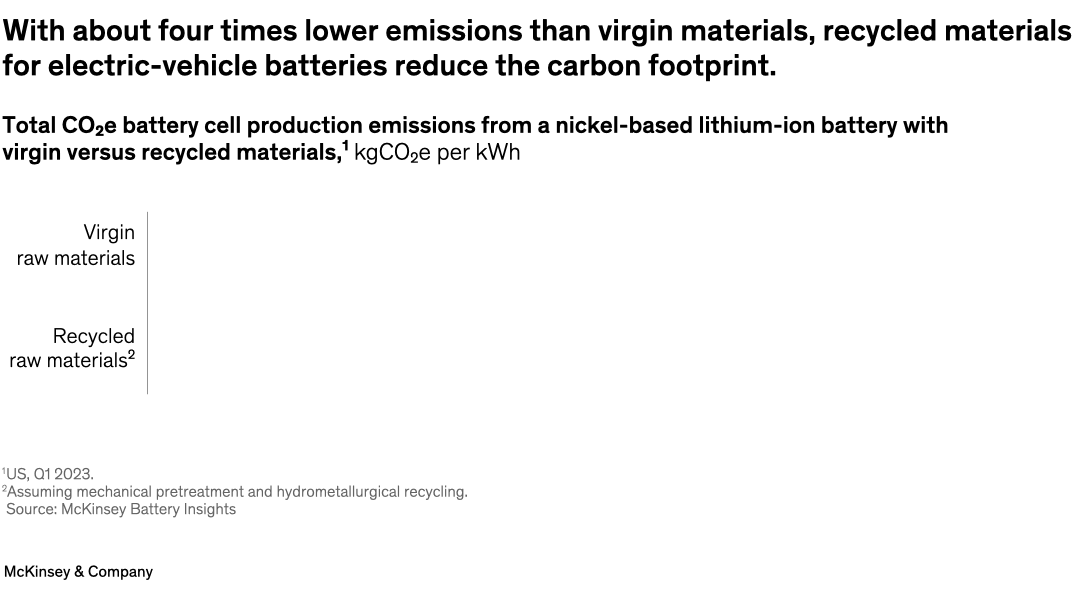Battery production for electric vehicles has soared to meet demand. And with 100 million vehicle batteries expected to be retired in the next ten years, there’s an opportunity to scale up battery recycling, note senior partner Martin Linder and coauthors. Production of batteries with recycled materials results in about four times lower carbon emissions than with new materials.

Image description:
Two horizontally stacked bar charts compare the carbon emissions emitted per kilowatt-hour (kWh) of battery cell capacity for a nickel-based lithium-ion battery made with virgin raw materials versus recycled raw materials. The top bar shows that batteries make with virgin raw materials emit 74 kilograms of carbon dioxide equivalent per kWh, while the bottom bar shows that batteries made with recycled raw materials emit 53 kilograms of carbon dioxide equivalent per kWh, indicating that the use of recycled raw materials results in a 28% lower carbon-emissions footprint.
Footnote 1: Figures are based on data from the United States, Q1 2023.
Footnote 2: Assumes mechanical pretreatment and hydrometallurgical recycling of recycled raw materials.
Source: McKinsey Battery Insights
End of image description.
To read the article, see “Battery recycling takes the driver’s seat,” March 13, 2023.